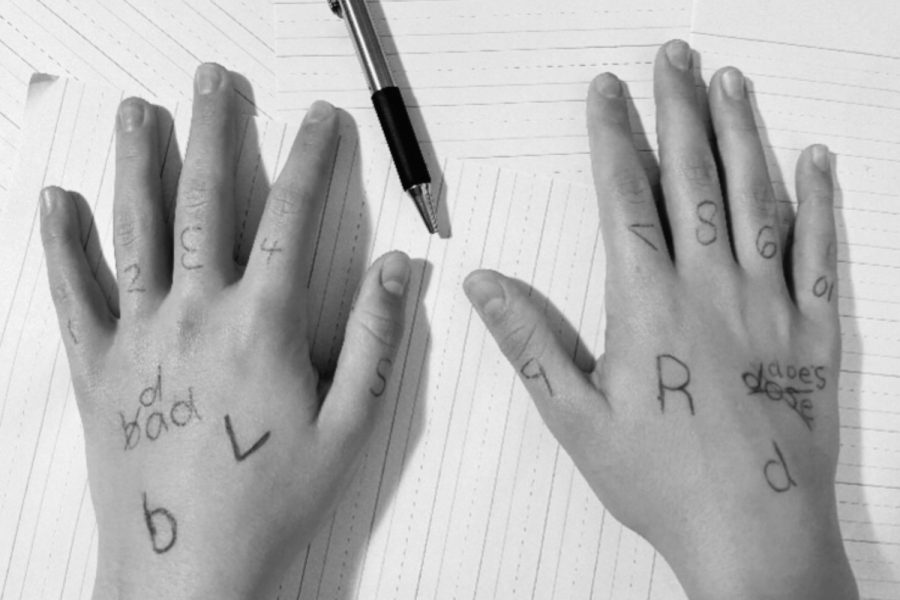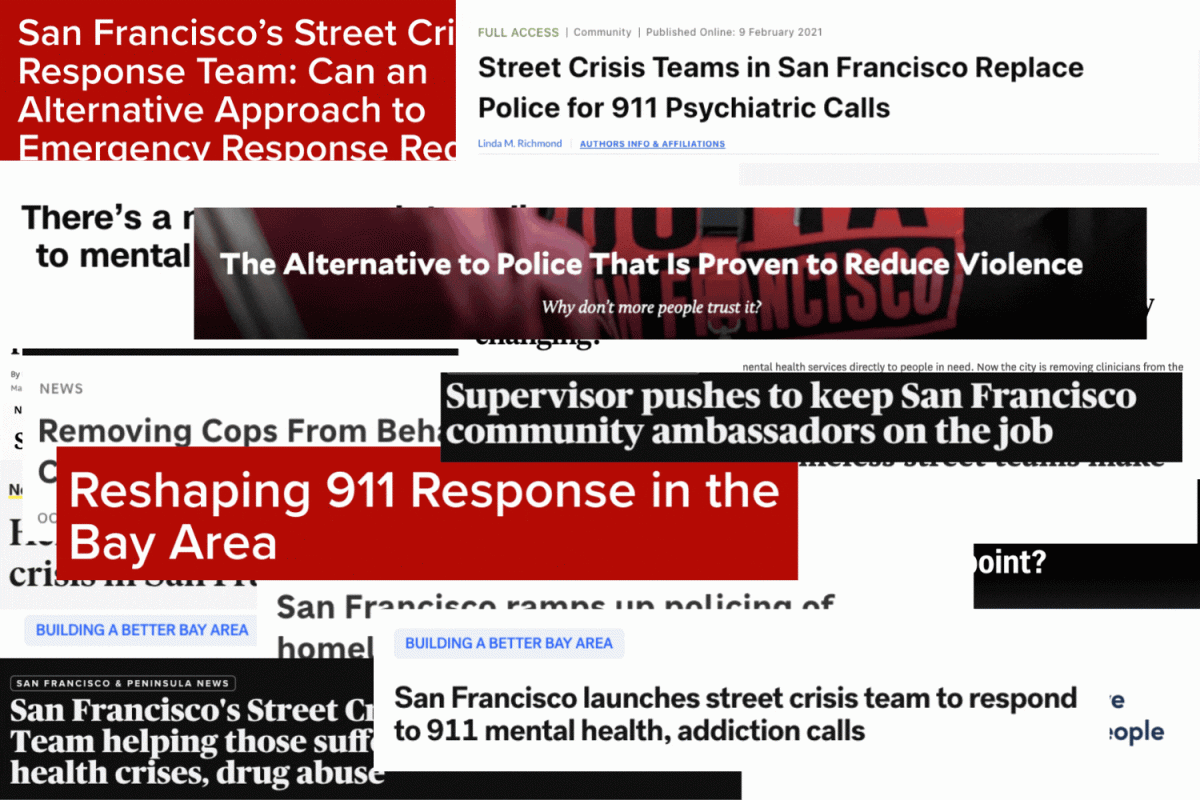For one in five kids, the world is written in a confusing font. An A, B, and a D can look the same. The spaces between words shrink. Phrases blend together. This is what reading is like for those who struggle with dyslexia.
Ryan Ebbitt is one such individual. He is an eighth-grader at Charles Armstrong, a combined elementary and middle school for dyslexic students in Belmont, California.
“In elementary school, reading was very, very hard for me. In third grade, I would go to the corner of the classroom and get this big book to act intelligent. Open that book up and every ten seconds, flip the page, and go on and on for a good while. I got to the point where I perfected fake reading,” Ebbitt said. “Good for me, but not good in the long run.”
Dyslexia is the most common neurocognitive disorder, according to the Yale Center for Dyslexia and Creativity. Dyslexia affects individuals’ ability to read and process language.
“The anatomy of reading goes back quite long ago. Joseph Jules Dejerine, a French neurologist in the 1890s, had seen some individuals who lost the ability to read,” said Zachary Miller, a neurologist at the University of California, San Francisco (UCSF). “This happened when people had damage to the left and inferior posterior parts of the brain. Insults [injuries] in this region of the brain generally can lead to profound disruptions in reading,” Miller said.
Dyslexia can be caused by a disruption of the left part of the brain, specifically the visual word form area (VWFA) in the left ventral occipitotemporal (VOT) cortex. These disruptions interfere with the brain’s ability to assemble many bits of information into a whole, also called Gestalt processing.
Multimedia 1 by Clementine
“We’re all wired systems. Our eyes take in information through the optic nerve. That information then goes to the back of the brain. In that area, there’s effectively a third eye that integrates all this information and combines our double vision into one major area,” Miller said.
Researchers studying dyslexia often use magnetic resonance imaging (MRIs) to conduct studies. If you place somebody in an MRI machine, it can detect which parts of the brain are active by measuring which areas use the most oxygen. These areas light up on the MRI screen. By studying the areas of the brain that light up for dyslexic individuals, scientists can develop a more complete neurological understanding of dyslexia.
“If I show you the word ‘stop,’ your brain is going to light up. If I show you a series of random letters together, your brain activity won’t show up as well. When you see a word you know, there is a very automatic ability to process the written language,” Miller said.
The ongoing Dyslexia Phenotype Project at the University of California San Francisco (UCSF) is working to understand the neurological, genetic, and behavioral expression of dyslexia. This project will help scientists identify the strengths and weaknesses associated with dyslexia.
“We can test basic sorts of neuropsychological paradigms to identify what areas of someone’s processing might be stronger or weaker. For instance, individuals with a classical concept of dyslexia might have greater challenges putting bits of sound together or rapidly naming objects,” Miller said. “If we can recognize where the areas of weakness are, we can discover where the areas of strengths are.”
By understanding these various aspects of somebody’s cognition, scientists can help those with dyslexia. If someone is weaker at something, they might want to strengthen themselves in that area. Or another possibility is to bolster one’s strengths instead and figure out new resources to work around the weakness.
Over 135 Charles Armstrong students are enrolled in the Dyslexia Phenotype Project as part of a partnership between the school and UCSF.
“When students first come to Charles Armstrong, the biggest issue they struggle with is fluency. Not being able to read with ease is the core problem for many students. Language is at the heart of everything, so without comprehension, it’s difficult for students to do well in a school setting,” said Neil Tuch, who has worked at Charles Armstrong for over four years and took over as principal this year.
To help its students develop their reading skills, Charles Armstrong uses the Wilson Reading System, a program for teaching those with dyslexia.
“Our program is very specific. We use a system called Wilson, which helps students learn sounds and visualize information,” Tuch said.
The Wilson Reading System is an intensive reading program based on research about phonological coding. Wilson drills students on every sound and letter combination in the English language. This system helps students develop alternate pathways through their brains for reading.
Charles Armstrong also uses iPads, audiobooks, and dictation apps to help students.
“We take time to understand every student and how they learn. Students are never pulled out of class or rushed alongside their classmates. Teachers are very patient and have been trained to create a positive learning environment,” Tuch said.
Students at Charles Armstrong have been taught new approaches to studying in order to overcome challenges. By doing so, they have learned to become resilient.
“I think that accommodating students is essential. A student may need a quiet place to do their work. Our students are very smart, but sometimes they need more time,” Tuch said.
By advocating for themselves at Charles Armstrong, students can enter high school confidently. They have identified what learning environment works best for them.
“One in five students in America have a learning difficulty. That means there is at least one dyslexic student per classroom,” Tuch said. “We can only have 250 students here, so it’s important that we help the learning community. We hope that more early interventions will be done, so no dyslexic students fall through the cracks.”
In the future, with more funding, teachers can learn how to support dyslexic students and give them access to more resources. Currently, even testing for dyslexia is expensive. According to The Dyslexia Reading Well, dyslexia screenings can cost $1,000 to $5,000.
“About 30% of our students have financial assistance. But eventually, I hope resources, like the ones at Charles Armstrong, will be accessible to more students,” Tuch said.
Made with Visme
In California, the state has budgeted to help dyslexic students. Gavin Newsom, the governor of California, has struggled with dyslexia since he was a child. In an interview with The Associated Press, Newsom explained his experience with dyslexia.
“I’m dealing with [dyslexia] every day. So many folks [with dyslexia] do give up, and that has tragic consequences. And others that don’t start to discover that this is the greatest gift in their life, and they can’t imagine a life without it. That’s really been my experience,” Newsom said.
Newsom has recently written a children’s book, “Ben and Emma’s Big Hit,” which tells the story of a young boy with dyslexia. All the proceeds from his book will be donated to the International Dyslexia Foundation.
To further support students with learning differences across California, the Newsom administration has set aside money in the 2021-22 budget to invest in new programs. The state budget funds several programs aimed to help dyslexic students, according to Grace Papish, a spokesperson for the Newsom administration.
The Newsom administration has also invested in programs that are specific to dyslexia.
“We set aside $1.5 billion over five years to train teachers in, among other things, literacy and dyslexia response strategies, and $1.1 billion to high-poverty schools to hire up to five additional staff, including reading specialists,” Papish said.
According to the enacted budget summary, the total state budget is $196 billion. That means about 1% of the current budget is going towards new education programs, growing to about 3% in 2025. UCSF is getting a portion of this spending for their research.
“The 2019 Budget provided $3.5 million to the UCSF Dyslexia Center for a dyslexia screening and early intervention pilot, and $6 million to establish the UC/CSU Collaborative on Neurodiversity and Learning. The 2020 budget invested an additional $2 million in UCSF’s California Dyslexia Initiative to help local educational agencies assess and address learning disabilities,” Papish said.
Michelle Porche is the Associate Director of Community Outreach at the UCSF Schwab Dyslexia & Cognitive Diversity Center. By researching dyslexia, the center hopes to make screening tools more available.
Another of the center’s primary focuses is reducing the social stigma surrounding dyslexia. These stigmas include the idea that people struggling with dyslexia are not trying. Or that dyslexia stems from a lack of intelligence.
“Dyslexia is not at all related to intelligence. It’s really about processing language differently and not a lack of ability. When you think about the myths, there’s this idea that letters are seen backward, which is kind of a stereotype,” Porche said.
Though dyslexia shows up when kids are in preschool, the reading exercises are too simple to make it evident. Dyslexia becomes particularly apparent when kids start reading for comprehension.
“When students are at the point when they’re doing more decoding, like sounding out words and reading for comprehension in second or third grade, they start to need the fluency to be able to comprehend what they’re reading,” Porche said.
However, being able to identify dyslexia earlier on is what enables students to get intervention support sooner. Researchers at the UCSF Dyslexia Center are working on assessments that schools can give to kids before and during kindergarten.
“Teachers can use this to work with kids on a more individualized basis. So, it’s important that teachers have strong professional development in reading instruction and literacy,” Porche said.
A critical piece in providing earlier support is identifying the kids struggling with dyslexia sooner.
Currently, Dr. Maria Luisa Gorno Tempini, the co-director of the UCSF Dyslexia Center, is refining an app to do dyslexia screenings on iPads. This app would allow teachers to perform screenings during class and give them solid information about their students without taking away from instruction time.
“There are at least nine districts across the State of California that are involved in this initial testing of the screening measures and use of this app. The goal is to roll that out and make it accessible across all schools in California,” Porche said.
Another possibility is to implement screenings during doctor’s visits.
“We already know that it makes a difference when pediatricians give out books, encourage reading, and talk with parents about developmental milestones. Ideally, screenings could be something that’s conducted in a pediatrics office as part of a wellness visit for kids,” Porche said.
All the research being conducted on dyslexia has proved very valuable for those affected, as it has helped bring awareness and normalize the learning disorder.
Scott Douthit, a teacher at Charles Armstrong, recognized the importance of making dyslexic people feel seen, heard, and related to. Douthit wrote his autobiography “My Dyslexic Life: A Journey out of the Shadows,” to depict what it was like for him to struggle with dyslexia without knowing it and help those with similar difficulties identify it.
“Today, about 18% of people have dyslexia but are undiagnosed. Outside of Charles Armstrong, many kids feel completely alone in their difficulties with learning. I wanted to let them know that they are not,” Douthit said.
Douthit believes one of his greatest successes was writing his book, which he published in June 2020.
“Coherently writing a book is difficult because you have to create connections. First, I had to write the sentences down, then deciphered them, then I used voice to text to write it on my computer, and then I edited everything. For every sentence I wrote, it took three to four hours to get it on the page,” Douthit said.
Despite the many challenges Douthit has experienced throughout his life, he has persevered through them.
“Another one of my biggest accomplishments is that I am a teacher. It took a long time for me to believe I could do something like this. For me, speaking up has been hard. By writing this book, I have done something I never thought I could do,” Douthit said.
Douthit wants to make sure that his students make their voices heard.
“There’s a misconception that people with dyslexia have a low IQ. But it actually affects those with high IQs. There are also stereotypes that people with dyslexia are stupid and lazy,” Douthit said.
These myths are far from the truth. Dyslexia does not present itself the same way in every person. Some people have a harder time with grammar, while others might not be able to differentiate sounds, leading to challenges with phonology.
“I want to help my students become more confident and help them find things they are legitimately good at. I don’t believe in giving students a ‘trophy for trying.’ Instead, I choose to help them bolster their talents,” Douthit said. “When something is difficult for students, their self-doubt is amplified. But when they find something they do well, I see them become more confident.”
Ever since Ryan Ebbitt joined Charles Armstrong, he has found ways to overcome challenges and find his strengths. Ebbitt finds it easier to absorb information auditorily, using platforms like Audible, an online audiobook application.
“Typically, Audible has the author read their book to you, so the way they talk reflects the page. That really helps me because little movies start playing in my head, and it’s like I get to watch what’s happening. It’s like a film that keeps running and running and running,” Ebbitt said.
At Charles Armstrong, Ebbitt has found a place where he feels like he fits in.
“I’ve found a home at Charles Armstrong. When I shadowed there a couple of years ago, it felt like I belonged, and everything clicked. Charles Armstrong has helped me become more confident in my reading. My teachers are helping me improve and pushing me to do my best,” Ebbitt said.























